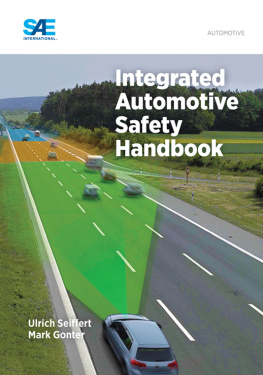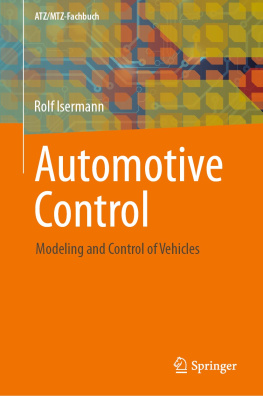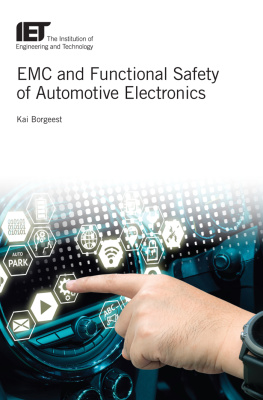This book describes all areas of vehicle safety: accident avoidance, pre-crash technologies, mitigation of injuries, and post-crash technologies. Special attention is given to driver assistance systems and to compatibility between vehicles in car-to-car crashes as well as pedestrian protection. Several countries have achieved a high level of vehicle safety; however, more than 1.2 million fatalities still occur each year on roadways worldwide. These metrics indicate a continuing need to improve vehicle and road safety.
New technologies in sensors and electronic control units and the growing knowledge of car-to-car and car-to-infrastructure technologies have fused the previously separate areas of accident avoidance (popularly known as active safety) and injury mitigation (popularly known as passive safety) into the newer concept of integrated vehicle safety. This new approach represents a further step in reducing accident rates. In this book we detail a significant number of integrated vehicle safety solutions.
We hope that this book will be useful for those who are interested in the complex field of automotive safety. In particular, experts from industry and academia, as well as students, can learn new details of vehicle safety engineering within the broad perspective of vehicle safety today.
Both of us have many years of experience in the field of vehicle safety engineering in both industrial research and development (R&D) and as associated lecturers at the University of Braunschweig, Germany. We thank the many people who have supported the creation of this book, especially from Audi AG, Daimler AG, and Volkswagen AG.
The views and opinions expressed in this book are those of the authors and not necessarily those of any academic institution or other entity.
Index
Abbreviated
Accident avoidance,
chassis design,
development of integral functions,
driver assistance systems,
driver comfort,
ergonomics,
human factors,
integrating with mitigation of injury,
tire design,
vehicle assistance systems,
Accident research,
accident data,
application of research data,
fatalities,
Accidents, see Collisions
Active safety systems,
Adaptive cruise control (ACC),
Adaptive front lighting system (AFS),
Adaptive occupant protection,
and accident severity,
age of occupants,
airbag control concepts,
based on accident situation,
calculating equivalent accident severity,
calculating virtual injury distribution in the field,
effectiveness and benefit in the field,
estimate of potential in real accident,
front-seat passenger,
individual protection,
individuality of the occupants,
injury probability,
occupant- and accident severity-specific,
and seat position,
summary of adaptivity,
transferring potential from simulation to reality,
unbelted occupant,
weighting of main influencing factors,
Airbags,
and belt force switching,
and front-seat passenger,
and unbelted occupant,
comparison of control concepts,
control concepts,
degressive vent control,
mass flow control,
optimum profile of vent opening,
precrash,
vent control with constant pressure,
vent control with switching belt force limiter,
volume control,
Anti-glare high beam,
Antilock braking systems (ABS),
Automated driving intervention,
Automatic brake intervention,
by vehicle-to-vehicle and sensor fusion,
Binary decision tree,
Biomechanics,
external injuries,
internal injuries,
tolerance limits,
Blood alcohol content (BAC),
Body in white, quasi-static test requirements,
Brake assistant (BAS),
Braking, automatic intervention,
Cameras,
CarMatching,
Car-to-infrastructure safety,
automatic braking intervention by vehicle-to-vehicle and sensor fusion,











